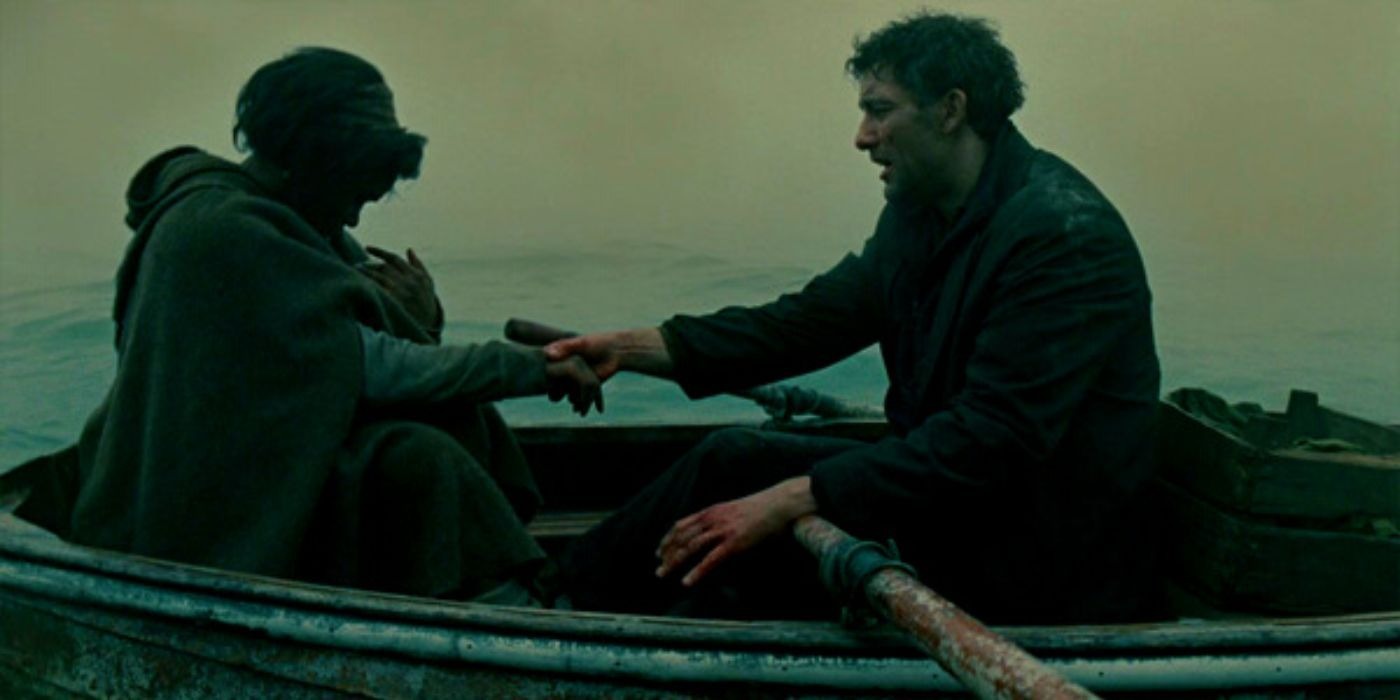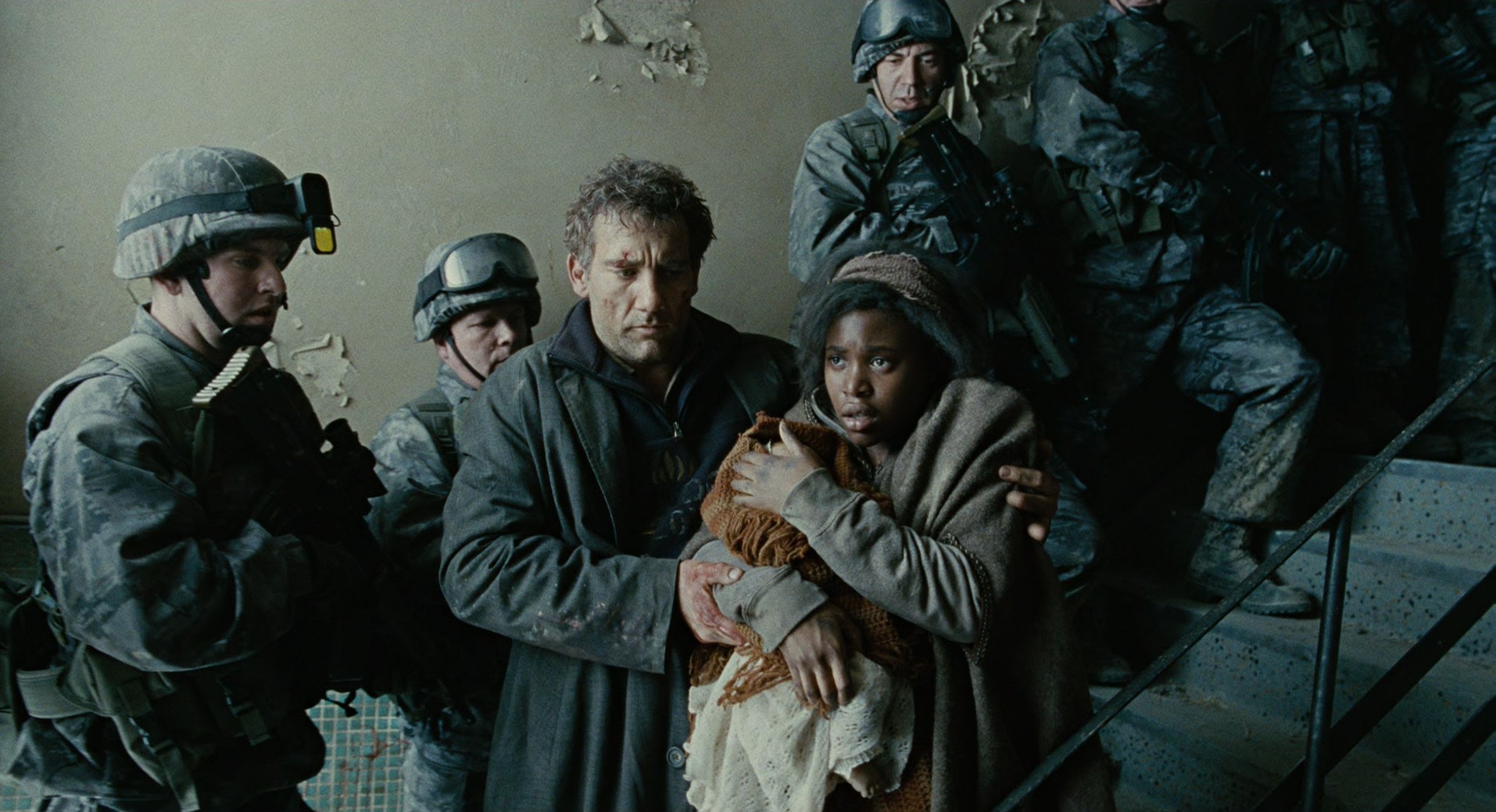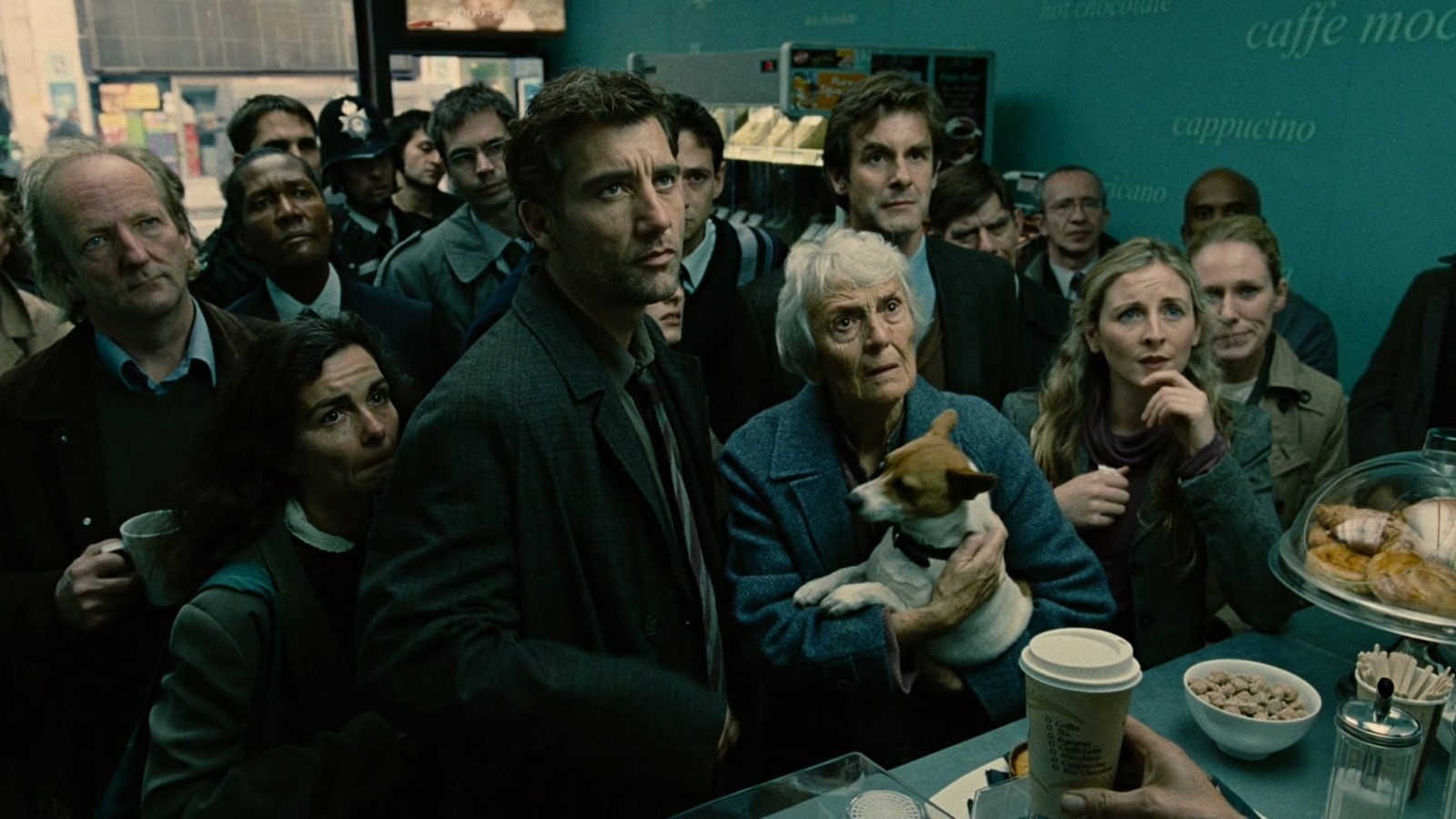Numerous dystopian films and television series feature a rugged, jaded protagonist journeying with a young companion who rekindles his sense of compassion, yet “Children of Men” stands out as the quintessential example of this genre.
Beginning with a straightforward premise, the 2006 dystopian action thriller reveals a world where no one has been born in over 18 years. While drawing inspiration from the novel it adapts (though not excessively), the film crafts a rich, immersive universe from this concept.

The empty playgrounds and Kee’s (Clare-Hope Ashitey) delayed realization of her pregnancy highlight the extensive ripple effects of this societal change, with each detail intricately woven into the narrative.
Unlike many films of its kind, “Children of Men” conveys a sense of a larger world continuing its rhythm beyond the camera’s focus. Every minor character, regardless of how small their role may be, seems to possess an entire narrative filled with struggles that remain unseen.
Although the script follows Theo Faron (Clive Owen) on his personal quest, the lens often captures the myriad challenges faced by those around him. This directorial choice by Alfonso Cuarón (“Roma,” “Gravity”) amplifies the film’s themes, making its conclusion resonate with even greater impact.
Theo’s Flaws and the World Around Him
The film opens with a scene in a London café where patrons gather around a television broadcasting the death of ‘Baby’ Diego Ricardo, the last child born before the infertility crisis took hold. The news elicits grief from everyone present; despite Diego’s lack of remarkable achievements, his mere existence symbolizes the dwindling youth of a world in decline.
In stark contrast, Theo remains indifferent. He enters, orders his coffee, and exits without a second glance at the screen. This apparent coldness becomes the very thing that preserves his life. Merely 30 seconds after leaving the café, where he pauses to add liquor to his coffee, the establishment erupts in an explosion.
This moment not only serves as effective worldbuilding, illustrating a society where violence can erupt at any moment, but it also compellingly advocates for apathy as a survival tactic. Theo’s indifference allows him to survive another day.
Theo’s detachment extends beyond mere survival; it is an understandable response to the chaos surrounding him. Having lost his only son to a flu pandemic, he cannot walk the streets without confronting human rights violations and extreme suffering.
Faced with the overwhelming pain of others, can we truly blame him for shutting it out? His attitude reflects a dramatized version of how many respond to tragic news today, scrolling past distressing stories on social media.
The Awakening through Kee
The first third of “Children of Men” focuses on gently nudging Theo out of his despondency. His ex-wife, Julian Taylor (Julianne Moore), has to offer him a huge sum just to entice him to undertake a seemingly minor task: escorting Kee to Canterbury. However, Julian’s shocking murder reinforces Theo’s belief that engaging in any meaningful cause is futile.
As the mission reveals, Theo learns Kee is pregnant. Gradually, we witness glimpses of his former self—a young man deeply in love with Julian, capable of kindness and support before life’s harsh realities stripped it away. Theo repeatedly risks his life for Kee’s safety, engaging in numerous selfless acts without expectation of recognition or reward.
During their separation at the refugee camp, a soldier forces Theo to surrender his expensive watch, which he does without hesitation. A smoker by habit, he trades his last pack of cigarettes to ensure Kee has a private room for the night, and even as he sustains a fatal injury later on, he remains primarily focused on protecting her and her child until he can no longer do so.
Quiet Acts of Compassion
These moments are not particularly grand or flashy, representing the bare minimum expected of a protector. Yet, there’s something profoundly moving in Theo’s quiet, consistent care for Kee, appearing almost instinctual. While the world of “Children of Men” is harsh and merciless throughout, Theo embodies a counterbalance.
Once others witness the baby, their inherent compassion surfaces. One of the film’s most poignant scenes occurs when soldiers, previously depicted as violently obedient to an authoritarian regime, halt their gunfire upon seeing the infant. This brief moment of peace starkly contrasts the chaos, illustrating a shared humanity that transcends their brutal environment.

However, as soon as Theo and Kee move beyond the vicinity of the fighting, the conflict resumes, as if the soldiers’ fleeting kindness were erased in an instant. The lives of those who paused for the baby are likely extinguished shortly after, yet the focus remains on Theo and Kee, emphasizing that the broader world of “Children of Men” is revealed only through their experience.
The Shadows of Uncertainty
Throughout the film, variations of conflict arise, leaving both major and minor characters in precarious situations, often without closure. Unlike most narratives that provide resolution or hints regarding characters’ fates, “Children of Men” leaves Miriam (Pam Ferris), who is forcibly taken by soldiers, to our imagination. The absence of clarity can be interpreted as a form of mercy; after all, witnessing her fate may prove too harrowing.
The same ambiguity surrounds Marichka (Oana Pellea), who aids Theo and Kee in the refugee camp. Despite Theo’s pleas for her to join them on the boat, she opts to remain behind, leaving her fate uncertain.
Though her chances for survival may seem better than Miriam’s, the outcome remains bleak. Her life story, both past and future, is a mystery, compelling us to confront the unsettling truth that some tales will remain untold.
The Human Experience in Chaos
Initially, the camera’s persistent focus on the suffering of others, before leaving them behind, serves as a critique of Theo’s apathetic perspective. However, as the stakes escalate for him and Kee, the narrative’s visual storytelling evolves.
Whether capturing the view from a bus window or depicting a mother grieving her son in a scene reminiscent of Michelangelo’s Pietà, the cinematography pays homage to the human experience.
The commentary shifts from questioning Theo’s ability to assist others to acknowledging his commitment to the crucial mission at hand. For those outside of his focus, the best he—and we—can offer is our silent wishes for their well-being.
This transformation mirrors the real-world experience of finding a cause to champion. When faced with distressing news, individuals often experience guilt, anxiety, or sadness.
The simpler route is to ignore such realities, shielding oneself from the burden of asking, “What am I doing to help?” However, like Theo, life becomes a bit more bearable once one discovers and actively supports a meaningful cause.
A Sense of Purpose Amid Despair
While Theo cannot save the countless individuals he encounters throughout this harrowing narrative, he can save one — and that makes a difference. This situation echoes an episode of “Doctor Who,” where the Doctor is compelled by the laws of time to allow the village of Pompeii to succumb to a catastrophic eruption.
Finally, his companion Donna persuades him to rescue at least one person, emphasizing that while he cannot save the entire town, every individual life matters.
This conveys an important lesson: amidst concerns about the world’s dire state and one’s inability to address every issue, it’s crucial to remember that not everyone expects you to fix every societal problem.
Finding one or two causes that resonate with you and focusing your efforts there is more productive. While you may not be able to change everything, taking action in even a small way contributes to making the world a better place.
At the film’s outset, Theo is a despondent figure, feeling immobilized by the overwhelming problems surrounding him. Despite the persistent chaos, he remains unchanged; the world still lies in disarray by the conclusion.
While the potential resolution of the infertility crisis hinted at in the film’s finale suggests a shift, it would take generations for society to regain any semblance of normalcy. Yet, in discovering his cause, Theo finds a purpose that suffices for him.
An Ending Filled with Hope
“Children of Men” is undeniably a somber tale. Throughout the narrative, nearly every character that Theo and Kee encounter either meets a tragic fate or is presumed dead. As Kee awaits the arrival of a ship from the Human Project, uncertainty looms over her treatment aboard.
Will she be subjected to experiments? Perhaps the most devastating revelation comes when it is revealed that Theo has been shot. By the film’s conclusion, he lies unconscious, leaving little hope that the crew will arrive in time to save him.
Nevertheless, the backdrop of hopeful music, the ship’s imagery, and the sound of children’s laughter accompanying the credits suggest an optimistic resolution, if only on a grander scale. Even if Theo meets his end, he does so as a hero, ensuring Kee safely sail through the most perilous segments of her journey.
When we first encounter him, he exists as a hollow shell of his former self, yet he rediscovers his essence at the crucial moment. After enduring years of heartache and despair, Theo finally finds a purpose worth living for, demonstrating the transformative power of hope amidst bleak circumstances.



